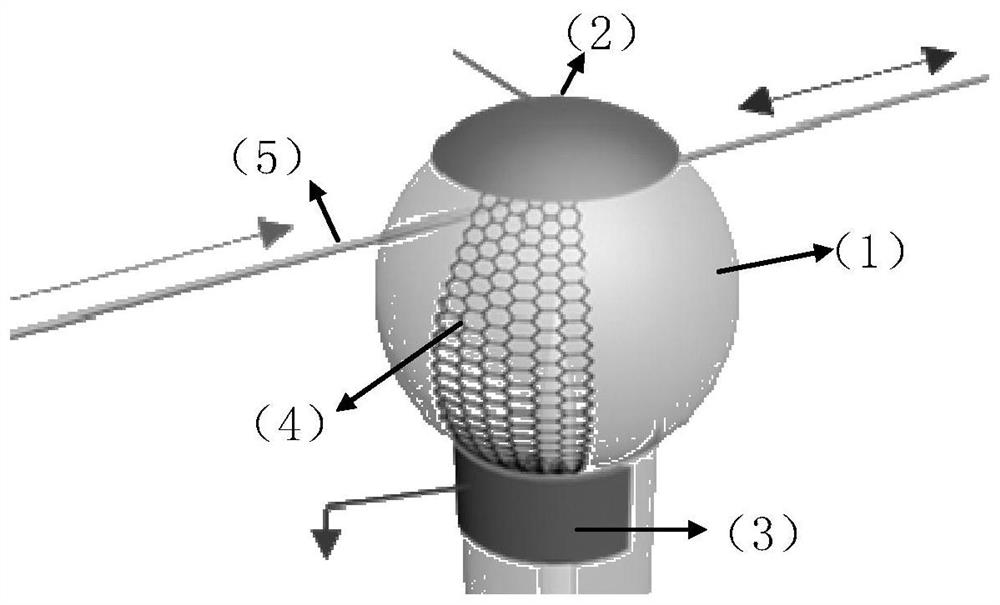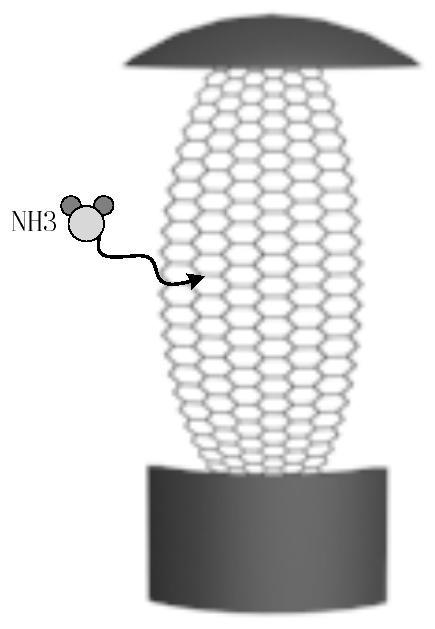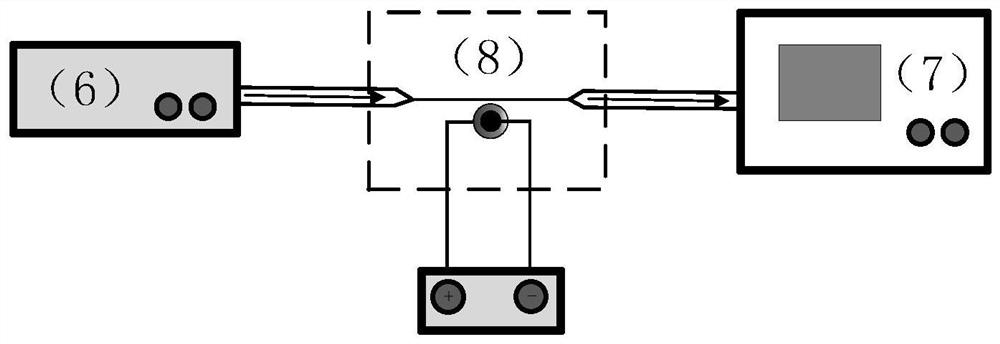A whispering gallery microsphere cavity single-molecule gas sensor embedded in graphene
A gas sensor and microsphere cavity technology, applied in the field of sensing, can solve the problems of weak anti-electromagnetic interference, low sensing sensitivity, dependence on chemical reactions, etc., to improve the sensing response speed and sensitivity, and reduce the mode volume. , the effect of small size
- Summary
- Abstract
- Description
- Claims
- Application Information
AI Technical Summary
Problems solved by technology
Method used
Image
Examples
Embodiment Construction
[0025] The present invention will be further described in detail below in conjunction with the accompanying drawings and embodiments.
[0026] A graphene-embedded whispering gallery microsphere cavity single-molecule gas sensor, based on graphene singularity, is composed of micro-nano optical fiber, single-layer graphene and silica microspheres.
[0027] The micro-nano optical fiber is 4 cm long and 2 microns in diameter; the microsphere is 280 microns in diameter, coated with two gold electrodes with a thickness of 30 nanometers, and the distance between the two gold electrodes is 100 microns. A single-layer graphene film with a width of 80 microns and a thickness of 0.38 nm, the entire device is connected to the optical system through a single-mode fiber ( image 3 ). The micro-nano fiber achieves efficient coupling with the microsphere cavity, and the coupling efficiency is as high as 95%.
[0028] The resonant cavity enters the degenerate singularity by applying an exter...
PUM
| Property | Measurement | Unit |
|---|---|---|
| diameter | aaaaa | aaaaa |
| thickness | aaaaa | aaaaa |
| diameter | aaaaa | aaaaa |
Abstract
Description
Claims
Application Information
 Login to View More
Login to View More - R&D
- Intellectual Property
- Life Sciences
- Materials
- Tech Scout
- Unparalleled Data Quality
- Higher Quality Content
- 60% Fewer Hallucinations
Browse by: Latest US Patents, China's latest patents, Technical Efficacy Thesaurus, Application Domain, Technology Topic, Popular Technical Reports.
© 2025 PatSnap. All rights reserved.Legal|Privacy policy|Modern Slavery Act Transparency Statement|Sitemap|About US| Contact US: help@patsnap.com



